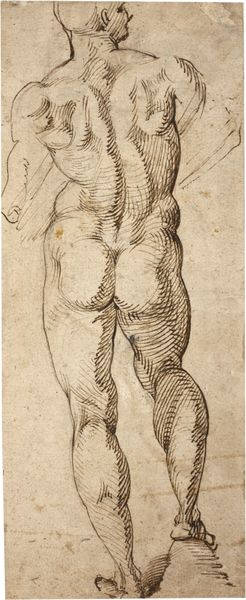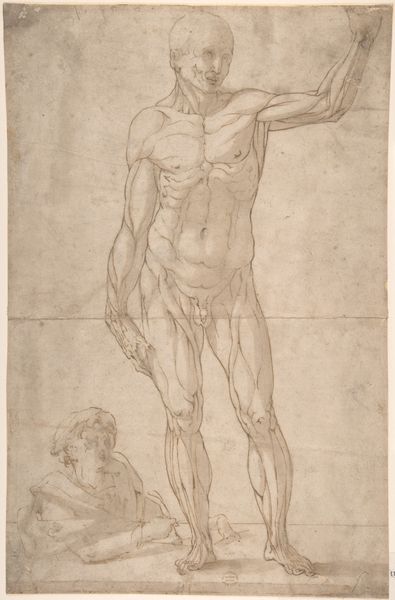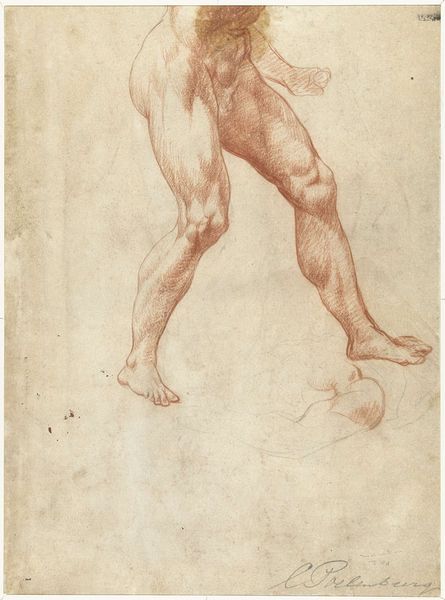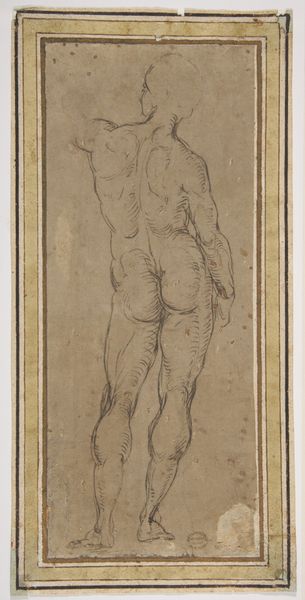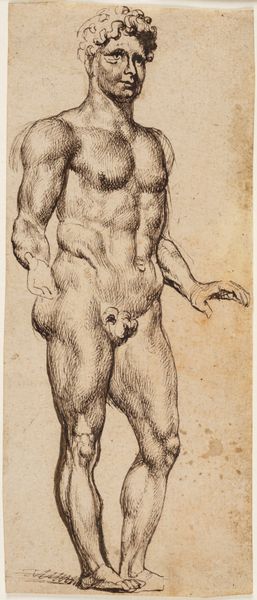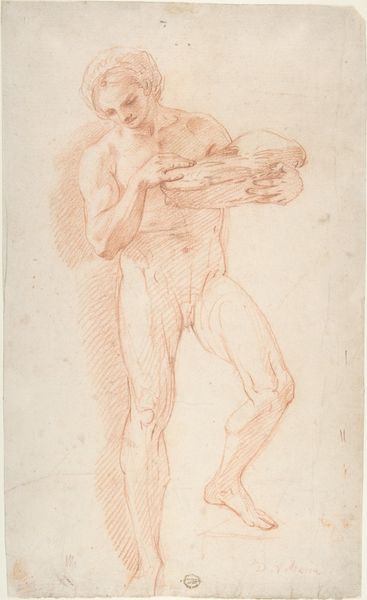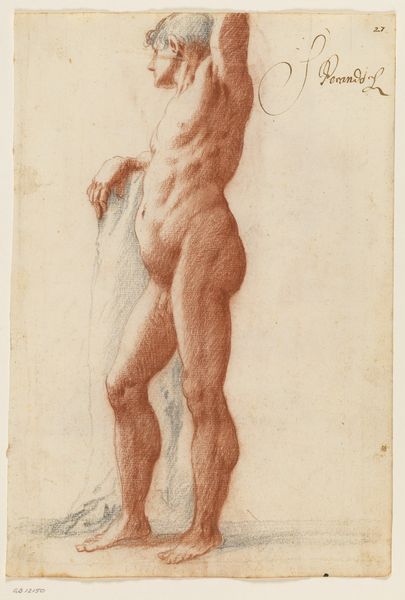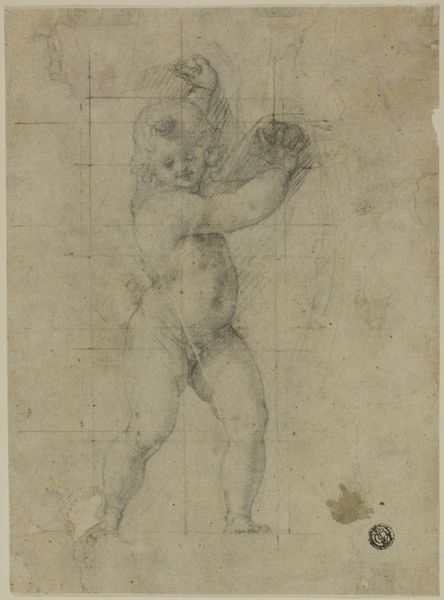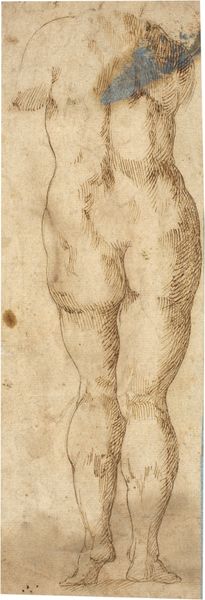
drawing, paper, ink
#
portrait
#
drawing
#
charcoal drawing
#
figuration
#
paper
#
11_renaissance
#
ink
#
coloured pencil
#
academic-art
#
italian-renaissance
Dimensions: overall: 21.7 x 14.9 cm (8 9/16 x 5 7/8 in.)
Copyright: National Gallery of Art: CC0 1.0
Curator: What strikes me immediately is the raw, almost urgent energy of these lines. The ink seems barely contained. Editor: Precisely. This is "Anatomical Studies," attributed to Domenico Beccafumi, most likely dating to the early 16th century. It's an ink drawing, heightened with coloured pencil, on paper. We see various studies of limbs. Curator: Studies indeed. The emphasis isn’t necessarily on perfect representation, but on understanding form, how the muscles articulate. I almost read these as performative explorations of the body as a site of power. Consider the legacy of humanism and burgeoning awareness about agency during the Renaissance in Italy. What narratives are inscribed onto our bodies? Editor: That's interesting. I’m also intrigued by how Beccafumi employs hatching to sculpt these forms, particularly the way light falls across the upper arm. There’s an almost palpable tension, created not just by the musculature, but the sheer density of the linework in those shadowed areas. It brings depth. Curator: And look at the subtle use of coloured pencil! The reddish tones add a layer of warmth and dimension to these figures, subtly emphasizing their vitality. This feels particularly important given what was happening at that time, because as anatomical science was gaining recognition, people, notably, artists like Beccafumi were keen to learn, but with an approach different than that of contemporary scientific rigor. Editor: It’s a fascinating point, about competing discourses and visual approaches. I'm particularly drawn to how Beccafumi articulates structure versus superficial surface qualities. His choice of media contributes too—the fluidity of the ink allows for a certain immediacy. Curator: In a way, the rawness almost deconstructs traditional portraiture; it strips the body bare to reveal underlying structures. If bodies signify, here the semiotic load is much heavier. Editor: An intriguing dialogue. From a formalist perspective, I was struck by the pure visuality of lines at play and the subtle modulations of light and shade that the artist teases out of seemingly simple materials. Curator: And from my vantage, I leave recognizing that this artistic journey resonates powerfully even today—how we look at, how we are compelled to consider what social scripts write bodies as vulnerable.
Comments
No comments
Be the first to comment and join the conversation on the ultimate creative platform.
